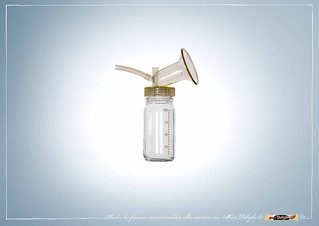 Everyone loves babies. We’re programmed to. It’s biological: A 2008 research study at Baylor showed that the happiness centers in our brains light up when we see a baby smiling at us.
Everyone loves babies. We’re programmed to. It’s biological: A 2008 research study at Baylor showed that the happiness centers in our brains light up when we see a baby smiling at us.
Conversely, a 2012 study at Aarhus University showed that a baby’s cry elicits a unique, lightning-fast response in his parents to soothe the baby. We want that crying to stop. We’re wired that way.
So, it’s puzzling why there seems to be a surge of entertainment centered on crying children, particularly infants. The quiver of the lip, the shaking of the chin, the miniature pout, the glistening tears. Apparently, it’s quite adorable. And as the child grows and those crying sessions become tantrums, these big reactions can seem downright hilarious to a lot of people. “You’re having a fit about what?!”
Making sport of crying babies – from Parenting.com’s “They’re mad, they’re sad, they’re so darn cute!” crying baby pictures to YouTube’s swarms of “cute baby crying” videos to talk show host Jimmy Kimmel’s challenge to parents to feign eating all their child’s Halloween candy to Japan’s crying babies festival (what!?) – seems to be taking this fixation with baby cuteness one step too far.
What ever happened to adoring a baby’s tiny toes or fingernails or curls? Or, celebrating a baby’s first steps or raucous laughter at a mom blowing her nose? And why are we oohing and ahhing and laughing at a baby crying rather than grimacing and imagining how we can soothe her? Why don’t these videos and photos make us more uncomfortable than they do, ringing our psychological bells to come to her rescue?
I’ve never found my baby’s crying anything different than distressing. I can definitely identify with that lightning-fast response time. Where’s the milk? Need a diaper change? Kiss the boo-boo. No, you can’t play with the scissors but here’s a ball to look at. And of course, my lap and arms are always open to comfort.
But I admit it, there have been a couple times when my six-year-old daughter’s meltdowns bordered on funny or when my four-year-old makes a comment that almost makes me smile. Almost – because in the middle of a little person’s over-the-top outburst, when he’s feeling so misunderstood, so denied, so frustrated, angry, sad, out of control of his world, is when the parent needs to strive to empathize with his child and to stay attuned. Attunement is impossible if we’re not allowing ourselves to get down to her level to understand her emotionality because we’re too busy seeing the situation through adult eyes, which invariably looks silly or completely unreasonable from our level.
And that’s the point: children are not on an adult level, so what we find silly or alternately adorable, they find devastating. And what we adults get upset over – getting our bills paid, taking an afternoon nap, eating broccoli – our children don’t see what the big deal is. Does that mean what adults care about isn’t important? Of course not. But don’t try flipping that around and saying that just because we adults don’t think a toy car is anything to be flailing around on the supermarket floor for, doesn’t mean that it’s not important to a child. And while some of us might find the scene of a complete meltdown somewhat, or totally, hilarious, it certainly isn’t to that child.
Children can’t fathom that their anger and sadness – their emotional pain – is funny or adorable. And expressing this, even privately within our minds, is disrespectful to our children. It comes back to talking the talk and walking the walk. We want to be respected for our needs and wants, so we need to live in a way that is respectful and that teaches our children to be respectful.




 Hello parents! The cover was risky but a brilliant hook by Time Magazine to attract readers, and they achieved their goal. The writer, Kate Pickert, herself a new mother and one of Time’s most diligent writers, sincerely wanted to increase awareness of the Sears’ family contribution to parenting and family health. She lived with our family for two days, followed me in the office, and spent hours with me on the phone in an attempt to be factual. While the cover photo is not what I or even cover-mom Jamie would have chosen, it accomplished the magazine’s purpose. And, as some attachment dads observed, finally a magazine displays a woman’s breast for the real purpose for which they were designed – to nurture a child, not to sell cars and beer. Cover-mom Jamie is a super-nice person and highly-educated in anthropology, nutrition and theology. I enjoyed the several hours I spent with her family and her kids shined with the social effects of attachment parenting.
Hello parents! The cover was risky but a brilliant hook by Time Magazine to attract readers, and they achieved their goal. The writer, Kate Pickert, herself a new mother and one of Time’s most diligent writers, sincerely wanted to increase awareness of the Sears’ family contribution to parenting and family health. She lived with our family for two days, followed me in the office, and spent hours with me on the phone in an attempt to be factual. While the cover photo is not what I or even cover-mom Jamie would have chosen, it accomplished the magazine’s purpose. And, as some attachment dads observed, finally a magazine displays a woman’s breast for the real purpose for which they were designed – to nurture a child, not to sell cars and beer. Cover-mom Jamie is a super-nice person and highly-educated in anthropology, nutrition and theology. I enjoyed the several hours I spent with her family and her kids shined with the social effects of attachment parenting.